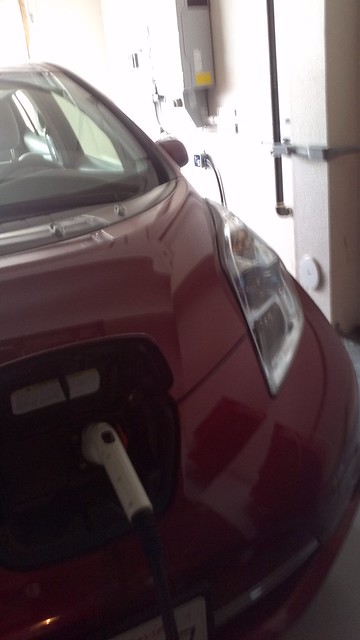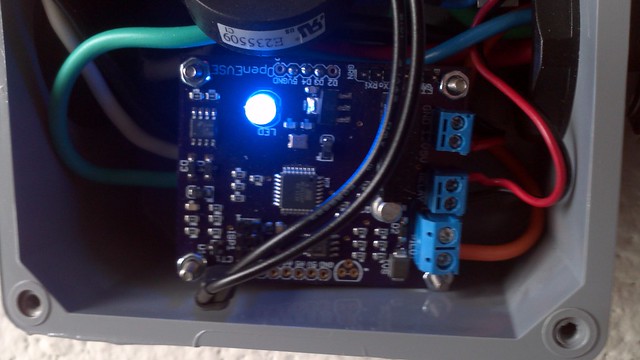Seems like with addition a simple 3 position switch, you could easily add "on the fly" amperage switching for portable use. Use 2 port pins, and you could have say 8, 12, and 16. I suppose you could also add one led and one button and have a cyclic amp selector. Have the LED blink at different speeds or duty cycles to indicate amperage selection. After say 10 seconds of no further button presses, the current setting is written to EE. If your cabling and relays are up to the task, you might wish to consider up to an 18.5 amp setting for use on 208v. This is not widely known, but the Leaf's charger will draw more than 16a at low input voltages. This is especially useful when plugging into many offices and commercial locations that have wye type service, as you'll get a faster charge then if you limited to 16a.
FYI: I set the current limit to 16.5a in the Rev II units for "16a", because sometimes a slightly low 240v input will mean you can still deliver a full 3.84kW. I'd recommend you also "pad" your settings up to 5% for this reason.
There are almost no 208v circuits out there that can't safely handle 18.5 amps, but do so at your own risk, and as always YMMV.
I didn't feel comfortable running the Panasonic unit that "hot" for the general public which is why I didn't do this on Rev II, but it has been tested.
-Phil








